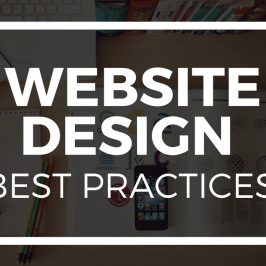Web Design Best Practices

Designing for Results: Web Design and Internet Marketing in NZ
Whether you’re looking to improve your current website or building one from scratch, there are a few key practices to keep front of mind when it comes to web design for internet marketing here in New Zealand. After all, the main goal of a marketing website is to attract visitors and potential customers. How effective your site is at doing this depends on several factors. Sticking to proven best practices will help you choose the right look and feel for your website to achieve the results you’re after and improve your conversion ratio.
Essential Web Design Practices for Kiwi Businesses
Here are some crucial considerations for effective web design:
Optimise for Website Loading Speed
Website loading speed is definitely a key consideration when designing. The internet thrives on speed – people expect quick searches, instant information, and easy purchases. It’s near impossible to succeed if your website is slow loading or poorly built. Avoid using multimedia elements that hog resources, like overly large, high-resolution images and videos. Test your site’s performance with tools like Google PageSpeed Insights.
When optimising your website’s loading speed, minimise unnecessary bells and whistles. Double-check your code (consider an SEO website audit to help identify issues), use linking effectively (learn more about search engine optimisation which covers linking strategies), and focus on clear text content to get your marketing messages across. Also, ensure your web hosting solution is up to scratch and can handle your bandwidth and uptime needs.
Minimise Distractions for Better User Focus
Avoid elements in your web design that could distract or annoy your visitors. This includes things like flashing banners, distracting background animations, or music that starts playing automatically. Even worse are elements that cover the entire page! These things often lead to a poor user experience – check out common pitfalls listed under annoying web design. If you absolutely must use such features, be certain they add genuine value and won’t drive visitors away. Research by usability experts like the Nielsen Norman Group often highlights how users react negatively to intrusive elements.
Maintain a Consistent and Coordinated Design
A coordinated design is vital for providing a good, enjoyable experience. Navigation buttons, logos, layouts, and colour palettes should all contribute to a unified look and feel across your entire site. This doesn’t mean you can’t be creative, but consistency helps build trust and makes your site easier to use. Aim for what constitutes a good website experience overall.
Even if you’re on a tight budget, you can achieve a coordinated design with a simple, professional logo and clear, consistent navigation. Visitors should never feel lost when Browse your site, as confusion can lead to high web page abandonment rates.
Ensure Easy and Intuitive Navigation
So, you’ve caught the attention of potential customers – what next? It won’t mean much if your website is a hassle to navigate. Place navigation buttons logically – common spots are the top, bottom, or side of the page. Many sites opt for top or left-side navigation, partly because people often start reading from the top-left, following established patterns like the F-shaped reading pattern. Ensure your navigation is clear and predictable as part of your overall web design best practices.
Prioritise Clear and Relevant Content
Last but certainly not least is your content. Visitors need easy access to the information they’re looking for, without having to guess. This means using clear titles and headings and providing relevant, helpful information that directly addresses their needs. Visitors should quickly grasp what your page is about; otherwise, they might just take their business elsewhere. Focus on creating helpful, high-quality content that aligns with Google’s guidelines on helpful content.
Keep it Simple: Effective Web Design Strategies
By following these best practices, you’re far more likely to design an internet marketing website that effectively meets your business goals. Don’t overcomplicate things. Think about your own expectations for a good website experience and implement those ideas into your own web design strategy!